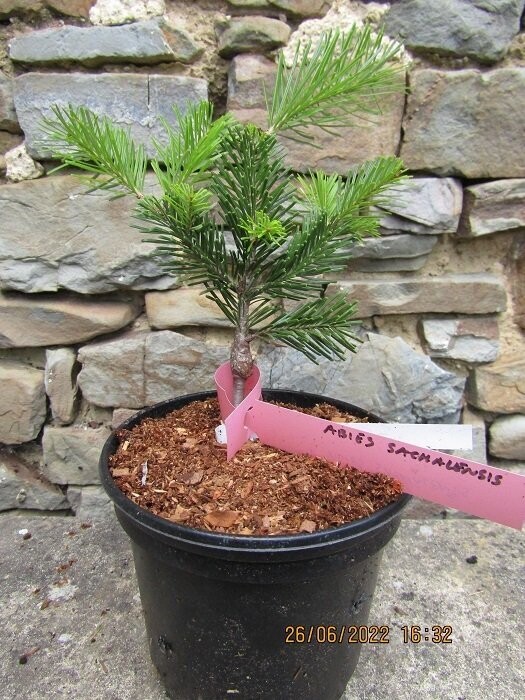Abies sachalinensis, sakhalin/Hokkaido fir 25-30cm EXACT ITEM OFFER
Abies sachalinensis, Sakhalin/Hokkaido fir, USDA H6-hardy
Synonyms: Abies akatodo Miyabe ex Sarg., Abies nephrolepis subsp. sachalinensis (F.Schmidt) Vorosch.,
Common names: Sakhalin fir, Hokkaido fir, Todomatsu (Japanese), Pikhta sakhalinskaya (Russian), Yayup (Ainu)
Description
Tree to 30(-40) m tall, or dwarfed at 2-3 m in exposed habitats, with trunk to 1 m in diameter. Bark grayish white, remaining smooth or breaking up into grayish brown scaly ridges with age. Branchlets densely hairy in the prominent shallow grooves between the leaf bases or overall. Buds 3-5 mm long, hairy and moderately to heavily resinous. Needles arranged evenly and densely out to the sides and above the twigs and hiding them, (1-)1.5-3(-3.5) cm long, intense bright green above, the tips blunt, rounded, or slightly notched. Pollen cones 10-15 mm long, red. Seed cones tapering strongly in both directions from the midpoint, (2.5-)5-7(-8) cm long, 2-2.5(-3) cm across, variously greenish brown through purple to black when young, maturing purplish brown. Seed body (4-)5-6 mm long, the wing half to two-thirds as long.
Sakhalin (hence the scientific name) and southeastern Kamchatka (Russia) to Hokkaidō (Japan). Forming pure stands or mixed with other conifers and hardwoods in subalpine, boreal, and mixed forests; (0-)100-1,650 m.


